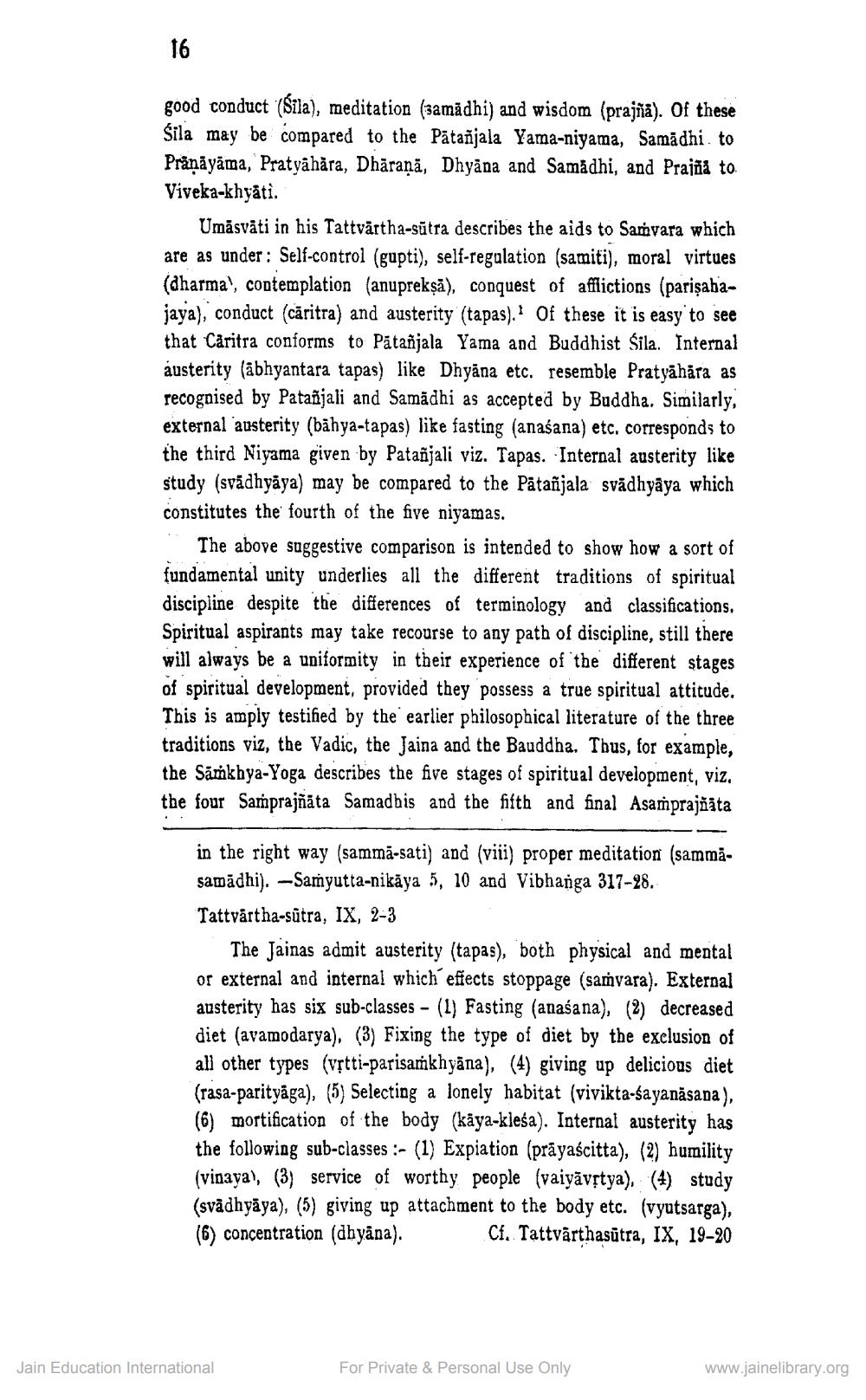________________
16
good conduct (Šila), meditation (samādhi) and wisdom (prajñā). Of these sila may be compared to the Pātañjala Yama-niyama, Samādhi. to Prånāyāma, Pratyähära, Dhāraṇā, Dhyana and Samădhi, and Prajña to. Viveka-khyåti.
Umāsvåti in his Tattvärtha-sūtra describes the aids to Samvara which are as under : Self-control (gupti), self-regulation (samiti), moral virtues (dharma!, contemplation (anupreksā), conquest of afflictions (parişahajaya), conduct (căritra) and austerity (tapas). Of these it is easy to see that Càritra conforms to Pātañjala Yama and Buddhist sila. Internal austerity (abhyantara tapas) like Dhyana etc. resemble Pratyahāra as recognised by Patañjali and Samadhi as accepted by Buddha. Similarly, external austerity (bāhya-tapas) like fasting (anaśana) etc. corresponds to the third Niyama given by Patañjali viz. Tapas. Internal austerity like study (svädhyāya) may be compared to the Patañjala svādhyāya which constitutes the fourth of the five niyamas.
The above suggestive comparison is intended to show how a sort of fundamental unity underlies all the different traditions of spiritual discipline despite the differences of terminology and classifications, Spiritual aspirants may take recourse to any path of discipline, still there will always be a uniformity in their experience of the different stages of spiritual development, provided they possess a true spiritual attitude. This is amply testified by the earlier philosophical literature of the three traditions viz, the Vadic, the Jaina and the Bauddha. Thus, for example, the Sámkhya-Yoga describes the five stages of spiritual development, viz. the four Samprajñāta Samadhis and the fifth and final Asamprajñāta
in the right way (sammā-sati) and (viii) proper meditation (sammāsamādhi). -Samyutta-nikāya 5, 10 and Vibhanga 317–28. Tattvårtha-sútra, IX, 2-3
The Jainas admit austerity (tapas), both physical and mental or external and internal which effects stoppage (samyara). External austerity has six sub-classes - (1) Fasting (anaśana), (2) decreased diet (avamodarya), (3) Fixing the type of diet by the exclusion of all other types (vștti-parisamkhyāna), (4) giving up delicious diet (rasa-parityāga), (5) Selecting a lonely habitat (vivikta-sayanāsana), (6) mortification of the body (kāya-kleśa). Internal austerity has the following sub-classes :- (1) Expiation (prāyaścitta), (2) humility (vinaya), (3) service of worthy people (vaiyāvstya), (4) study (svādhyāya), (5) giving up attachment to the body etc. (vyutsarga), (6) concentration (dhyāna). Ci. Tattvärthasūtra, IX, 19-20
Jain Education International
For Private & Personal Use Only
www.jainelibrary.org




